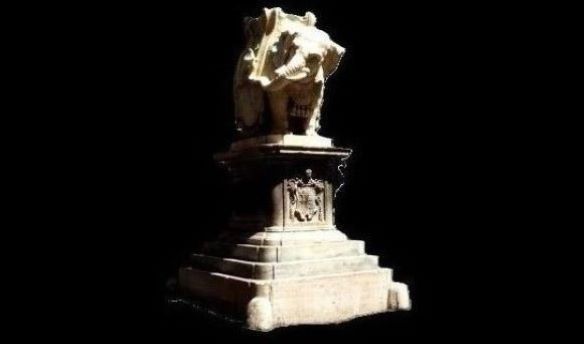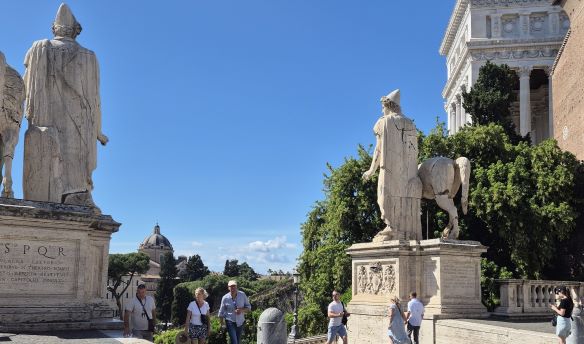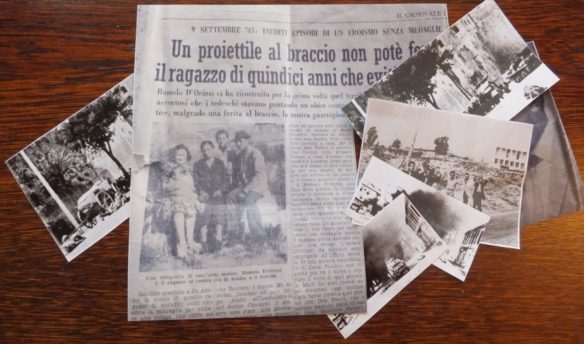(Quest’articolo è stato disponibile anche in italiano – vedi sopra)
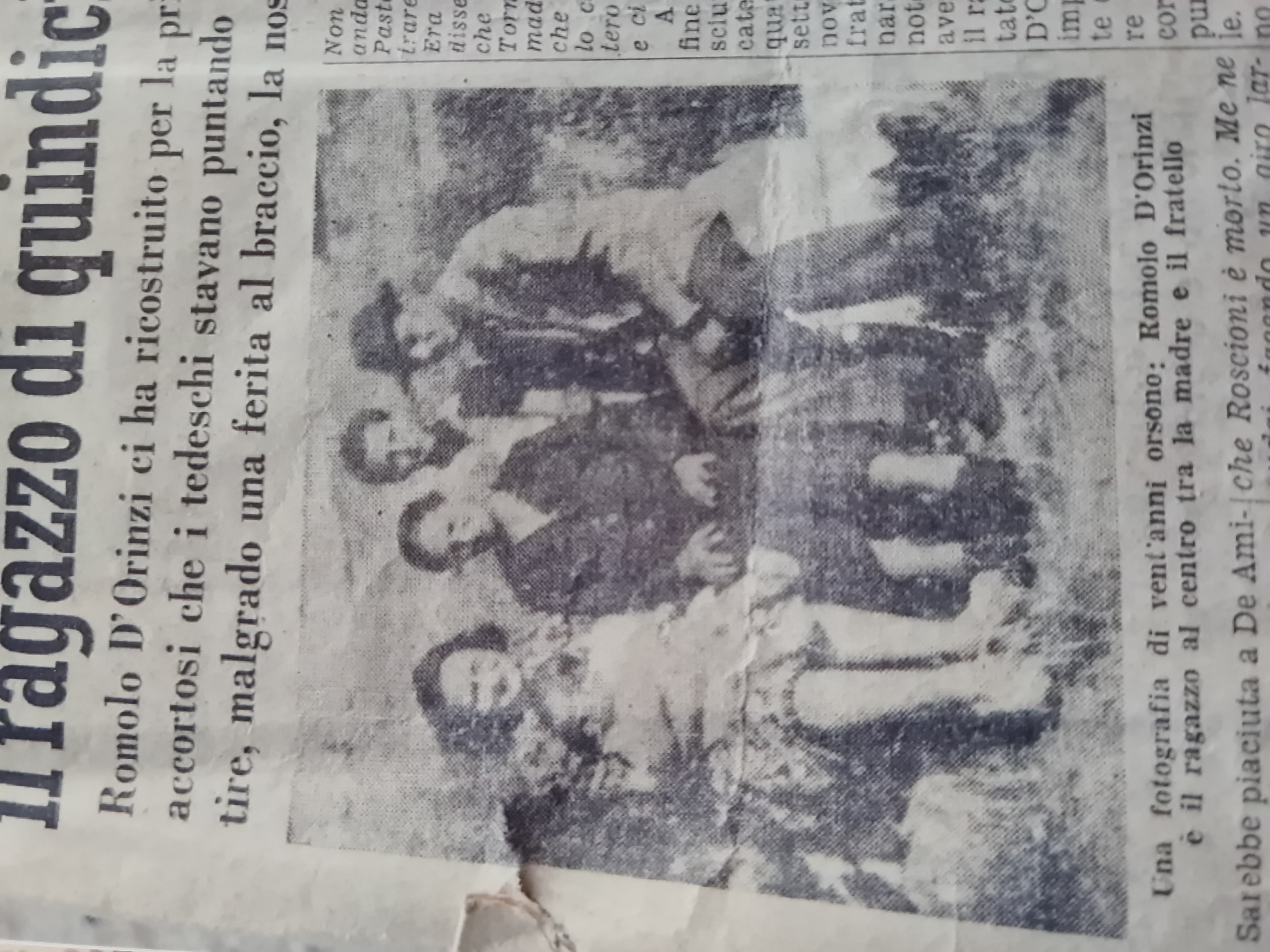
A young Romolo Dorinzi is at the centre of this picture, with his family.
He lived to the south-west of Rome, close to the road that connects the city to the coast.
In those days, the road was Via Imperiale, now it is called Via Cristoforo Columbo.
If, today, you drive from the centre of Rome to the beach at Ostia, it will take about twenty minutes along this road.
On 8 September 1943, the 2nd German Parachute Division was south of Rome, near to the coast. The Division comprised approximately ten thousand men.
That evening, they were ordered to advance on Rome.
In the early hours of 9 September, the German troops began their assault. The initial fighting was around Ponte Magliana to the south-west, a key bridge that would allow access for armoured vehicles. The Italians fought fiercely but were outnumbered, and the Germans advanced towards the centre of Rome.
Romolo Dorinzi remebered the day well:
I was fourteen years old. I lived in via delle Statue 10 with my mother, Assunta, and my sixteen-year-old sister, Luciana. My father had died and my three brothers were fighting in the war.
It was the morning of 9 September, approaching midday, and Luciana had gone out. A bombardment began and I was afraid that the roof would fall in on us.
My mother said: ‘We’ll go to the church; the Lord will help us.’
I went with her, intending to return home afterwards and wait for my sister.
On the way to the church, we saw wounded men and overturned carts. The German soldiers were positioning a howitzer towards the fort on the other side of Via Cristoforo Columbo. Our soldiers, grenadiers, were over there, and I knew a lot of those men. I realised that they would not be expecting an attack to their rear.
[The Italian soldiers formed the 21st Infantry Division, the Granatieri di Sardegna. They had taken up position around Forte Ostiense, one of the strongholds identified in the city’s defence plan.]
The howitzer must have been heavy, as the German soldiers were struggling to set it up. I thought that I should do something and ran towards the fort, leaving my mother. She called to me but I don’t remember what she said.
I shouted back: ‘They want to kill them.’
Behind me, the Germans were shooting, I think at me. I heard machine gun fire. Every so often, I threw myself on the ground, trying to recover my breath; it was about seven hundred metres to the fort, and it seemed such a long way.
I thought: ‘My God, they want to kill me!’ and then I felt a burning sensation in my left arm. The shirt sleeve was ripped and I saw blood, but the fort was close and the howitzer still not firing.
I reached the fort and blurted out what I had seen. The soldiers were not expecting an attack like that and took me to an officer, where I repeated everything. Thank the Lord, they believed me and the officer gave the order to vacate the fort.
[The Granatieri continued their fight: the surviviors were combattants in one of the final engagements, at Porta San Paolo.]
One of the soldiers saw my wounded left arm and said: ‘But what are you doing – do you want to lose your arm?’ I tied it tightly with a handkerchief and, as the others left, I started to wander around the courtyard.
I didn’t want to turn back straight away under machine gun fire and so I approached the nearby baker, Guarino Roscioni. He regularly supplied bread to the soldiers, and I knew him well. Although most of the soldiers had moved away, scattering to avoid enemy fire, one lieutenant remained, standing before the baker. Roscioni gave him two bread “sfilatini” then greeted me. At that moment, a grenade exploded, hitting the lieutenant full-on. I still remember him, lying on the ground, the bread rolls in his hand.
Around me, it seemed like the end of the world. Roscioni told me: ‘Get out of here.’ He started to cry and I learnt later that he had been killed.
I left, making a large detour, and went to the clinic of Doctor Ciccolini. He was not there but in Montagnola I met a woman who I think was a nurse. She removed my blood-stained handkerchief and put on a new bandage. ‘There may be shrapnel in there,’ she said. ‘You must find a doctor, otherwise you’ll lose your arm.’
That reminded me of the soldier’s words earlier, but the only place where I would find a doctor was at the Red Cross, and the Germans were there. I went anyway; after all, an arm is an arm!
The Germans had set up an infirmary in a school close to Via Cristoforo Columbo. I showed them my arm and they put me in an annexe with other wounded people. Soldiers stared at me and a doctor took my arm, examining it carefully. Still holding my arm he said: ‘A pity you’re Italian,’ and propelled me to a white bed. They treated my arm, gave me an anti-tetanus injection and told me to go to a hospital. Then they let me leave.
It seemed unreal and I hurried to the church to find my mother. She was not there but I was told that Don Pietro, the parish priest, had seen her praying. I returned home. to find my mother and sister. My mother was very relieved to see me and, after an hour or so, accompanied me to San Camillo Hospital. They gave me a corner bed and I remained there for about two weeks.
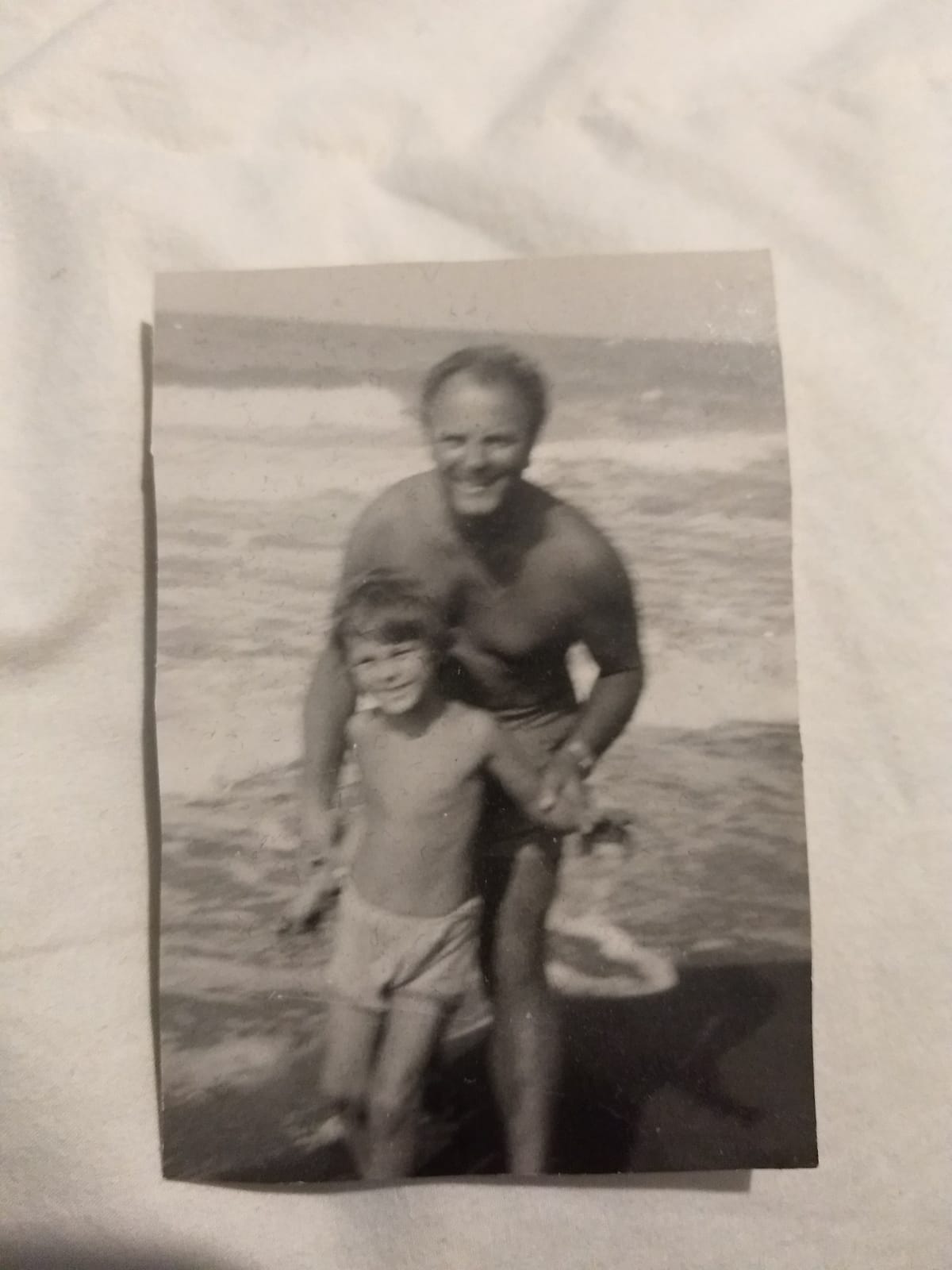
Romolo Dorinzi 22.11.28 – 18.5.19.
He is pictured here on Ostia beach, south-west of Rome, with Fabio, his youngest son.
Romolo lived his entire life in Rome and his story was told in Il Giornale D’Italia, 10 September 1963 and in Roma Citta Prigionierà by Cesare de Simone (1994).
My thanks to Fabio Dorinzi for the photographs and for allowing me to include his father’s story.


